The Wrenegade Wrench Series: Homebrew Cable Guide Kit
In a poll that is up right now on our forum, 43% of Slowtwitch readers indicated that they do all the work on their bikes themselves. Based on this, it seems to be a pretty fair assumption that most of you, then, do at least some of the work on your bike yourselves. It’s also probably a safe bet that more of you would work on your own bike if the whole process of doing this work was just a little bit easier. We’d like to help with that.
This is the first installment in a new column devoted to working on bikes. As time goes by, we’re going to talk about tools, parts, and processes, and share tips and tricks that make working on bikes a little bit easier, a little bit less mysterious, and – hopefully – a lot less frustrating. Future installments will include solutions to common problems, favorite tricks from some of our favorite mechanics, tool tips and reviews and more, always with an eye towards the world of the DIY Slowtwitch home mechanic.
We’re kicking things off with full-tilt DIY, the Wrenegade Wrench homebrew cable guide kit.
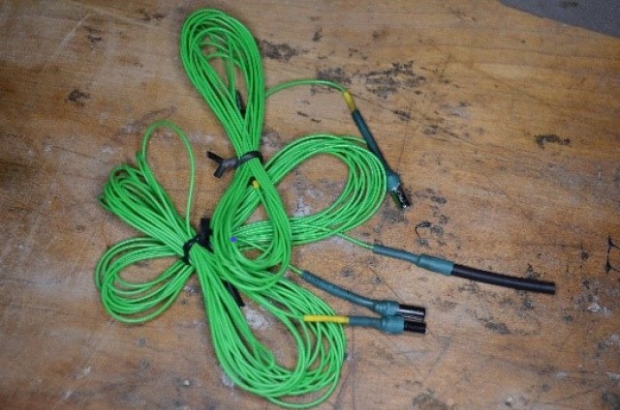
If you work on your own bikes it’s pretty much inevitable that you have – or will, eventually – be forced to reckon with the task of running cables/housing/hoses through the labyrinthian interior of a bicycle frame.
There are a fair number of products available on the market to help make this task at least a wee bit easier. Over the years, I’ve used most of them, and some of them are pretty darn good. Slowman wrote a piece on internal cable management a while back that featured the de facto industry standard solution from Park Tools.
The Park Tools kit is the standard for a reason; it’s a really good system. For those who haven’t used one, the basic concept is fairly simple: a magnet is attached to a long line, and the other end of the line has something on it that connects to whatever you need to route through your bike frame. You stick the magnet on the end of the line into the entry port on the frame, and you pull it through the frame with another magnet on the outside of the frame.
Oddly enough, I’ve had a nearly identical puller kit in my tool box for a couple of decades now. It was originally used to pull wiring harness components into place when I was working on hollow body electric guitars, back in my previous life in the luthiery business.
25-30 years or so ago if you wanted something like this you absolutely had to make it yourself. Today, even though you can buy one for 65 bucks or so, there’s still something to be said for a home-brew kit that you can tailor to your own particular needs.
The homebrew alternative is also pretty darn inexpensive. I put my kit together from things I had lying around the shop and about $20 worth of bits ordered from Amazon. If you had to purchase everything needed to put these together, you’d probably be looking at around fifty bucks, but you’d also wind up with a lifetime’s supply of kits for yourself and a couple of friends, plus some extra bits that are nice to have around the shop anyways.
Here's the parts list:
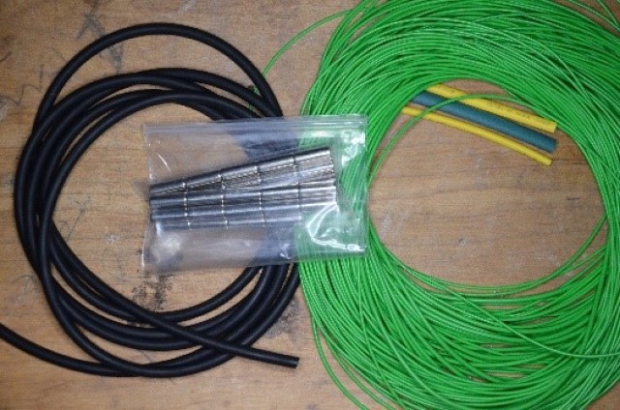
– Cylinder magnets, 4 (or 3)mm x 10 mm.
The standard nominal OD of bicycle brake cable housing is 5mm,
and once assembled a 4mm magnet will mic out at around
4.37mm. That’s a wee bit larger than the 4.25 that I just measured
a nominally 4mm shift housing at. What this means is that 4mm
magnets will work for the vast majority of applications, but you
might want to use 3mm diameter magnets just to be sure.
– Loop-end floating fly fishing line
I’m using fly fishing line for these because, well, it works great.
Very strong, very light and thin, and glue sticks to it. It’s worth
spending the $8-10 it costs to get some if you don’t happen to
have some lying around.
– 1/8” OD x 1/16 ID latex tubing
– Heat shrink tubing in various sizes
– A hydraulic hose barb
– Medium or thick cyanoacrylate adhesive (superglue, not the water
thin kind)
Now let’s look at how these go together.
Step One
Cut your fishing line to length. You’ll want something that’s long enough to go the distance of the internal routing channel in any frame that you may conceivably work on. The penalty for going too long is pretty much nonexistent, so add a foot or two to whatever you think is reasonable. 250cm or so is a pretty safe bet.
Step Two
Thread some heat shrink tubing over the line. Don’t forget to do this before you get everything glued together, or you’ll be starting over! You’re going to want to use two sections of tubing, one that is just big enough to slide over your magnet (or whatever is going to be on the other end of the line), and one that is just barely big enough to slide over the line itself.
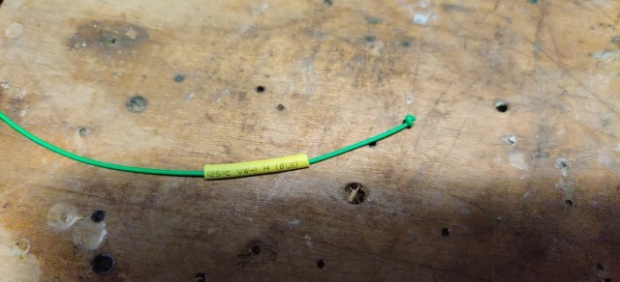
Step Three
Tie a knot in the end of the line. This doesn’t have to be anything fancy, you’re just looking to increase the surface area of the line at the point that it makes contact with the magnet.
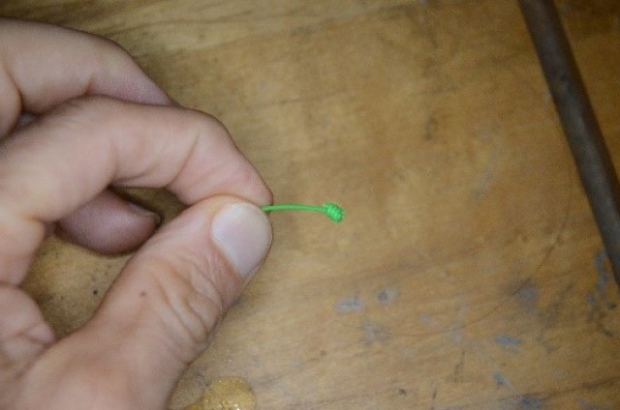
Step 4
Glue the magnet to the line.
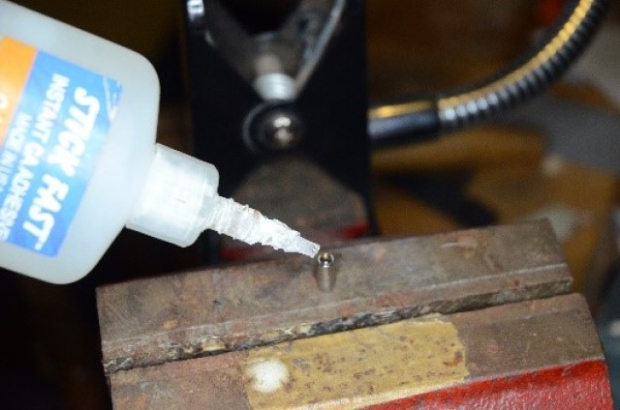
I’m using medium thickness super glue for this, but there are other adhesives that will work fine. You may want to use something to hold everything together while it dries.
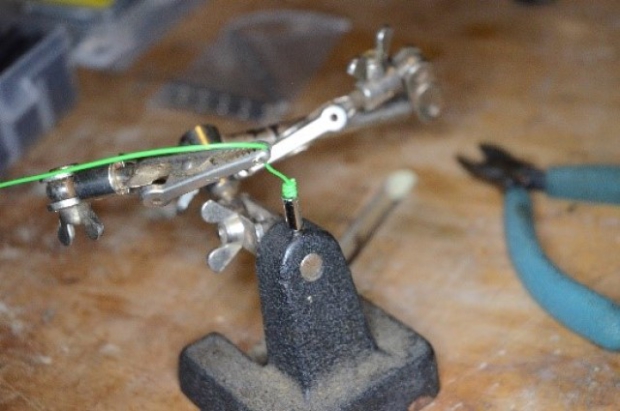
Step Five
Slide the heat shrink tubing up so that the smaller piece is right against the knot in the line, and the larger piece is lapped over the magnet, then apply heat.
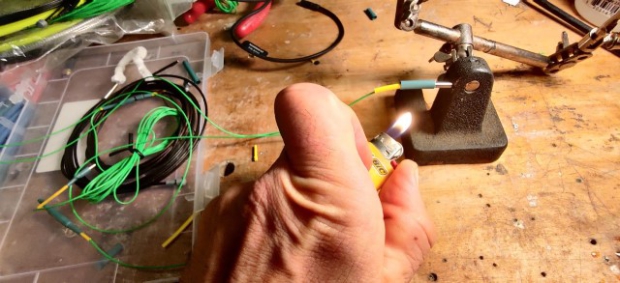
That takes care of the magnet end. On the other end of the line, you’re going to want/need a couple of different things.
For the simplest variant, I just use the loop that came formed into the fishing line. This works pretty darn well with, for example, DI2 connectors.
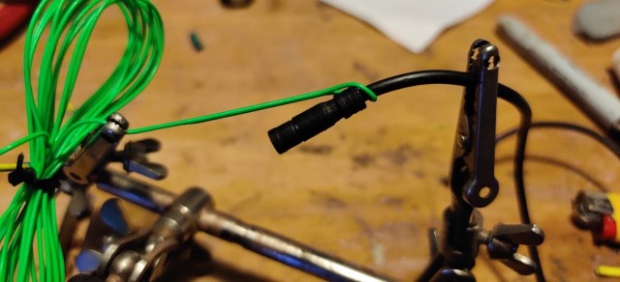
This works surprisingly well with brake/derailleur housing and brake tubing as well. Just add a little bit of scotch tape.
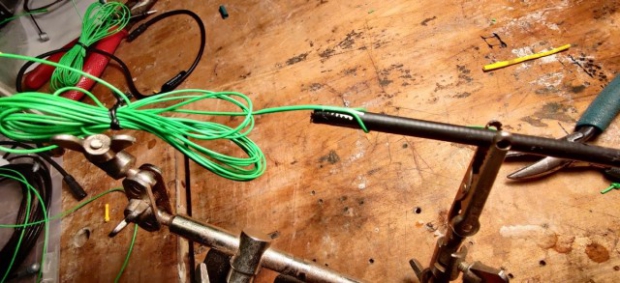
It’s more than solid enough to pull through a frame if the guides aren’t super tight.
Another variant adds a latex tube at the end of the line.
Once again, slide your heat shrink tubing onto the line, but then follow up by sliding about an inch of latex tube on as well. Knot the line after it has been slid through the tube, then pull the knot back through until it’s just about to pop out the other end. Drip some glue down over the end that the line comes out of, let dry, and finish up by repeating the heat shrink process described earlier.
I’m using a 1/8” OD x 1/16” ID tube, and it’s pretty multi-functional. It’ll slide over a brake cable (it’s a wee bit too big for a derailleur cable, but a wrap of scotch tape over the cable fixes that) over the contact of an eTap blip connector, and it’s just the right size to slip inside a DI2 connector and over the male contact inside. Pretty slick.
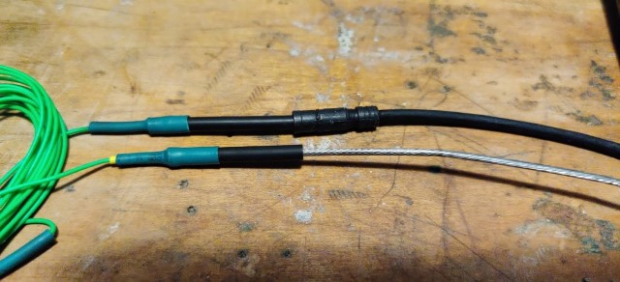
I do typically add a wrap of tape over the junction between the tube and whatever it’s attached to before I pull it through the bike, just in case. If you want to use a larger ID tube that will fit over the DI2 connector have at it, but this has been working pretty well for me.
If you’ve used the commercially available version of this setup – or read the piece I linked to above – you know that the tubes on these things tend to break down over time. It’s worth making the tube a wee bit long so you can cut it down as it deteriorates. It’s no big deal to replace one when it does, but these things do tend to happen at the worst possible time, generally when you really, really need to get the darn cables in NOW!
The third thing I would recommend putting on the end of one of these is a hydraulic hose barb.
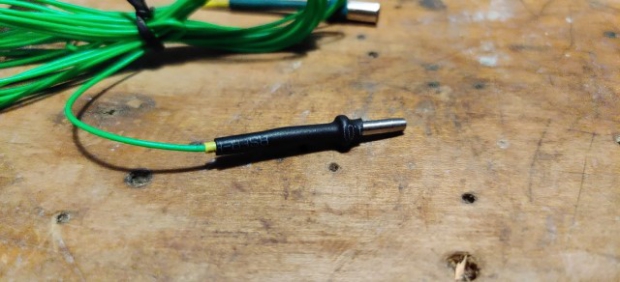
It’s pretty obvious why you might want this, eh? To pull hydraulic hose through! That’s not all, though. This will work really well with both derailleur and brake housing.
Same basic build process as we used for the latex tube. Pull the knot back through the barb, drip glue in, heat shrink over the top, voila!
To use, just push the barb into the hose/housing far enough to get a grip, but not so far that it’s going to be a pain to remove. The outer diameter of this winds up being pretty much identical to your housing/tubing, so it’ll fit through just about any molded-in guides you might come across. You can make this OD even smaller by grinding down the flange in the barb a wee bit (but leave some of it in place to ease removal from whatever you’re sticking it in).
Oh! One last thing! You’re going to need something to pull these through your frame. To be honest, I mostly just use a bare magnet, but I also glued another magnet on to the end of section of brake hose.
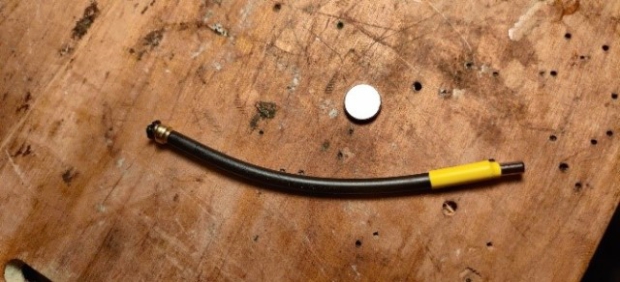
This winds up being pretty useful to reach inside the frame to scoop up the end of the line when it approaches the “out” of a frame.
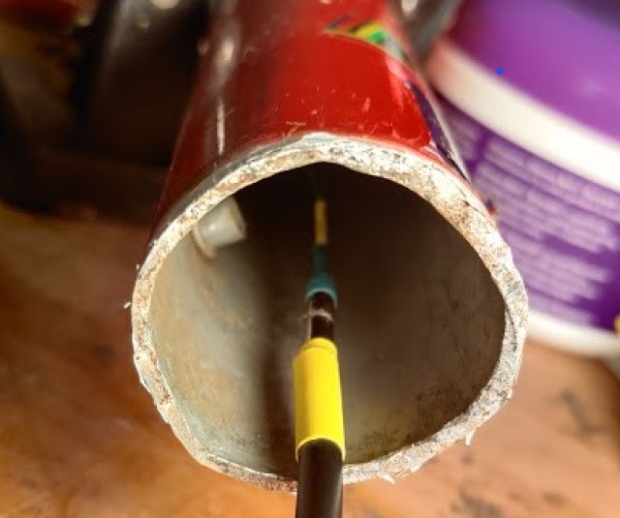
So maybe put one together if you’ve got magnets left over.


Start the discussion at slowtwitch.northend.network